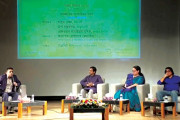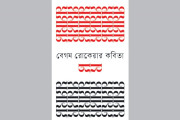Lead is a silent killer, the impact of which threatens the development, well-being and survival of more than 3.5 crore children in Bangladesh today.
।। Samia Jahan & Ashikujaman Syed।।
Lead poisoning is still one of the leading causes of death in children in Bangladesh. A third of the world’s children poisoned by lead: Bangladesh is the fourth most-seriously hit in terms of the number of children affected. UNICEF and Pure Earth call for urgent action to abolish dangerous practices including the informal recycling of lead acid batteries. “There is no specific clinical study on the effects of lead contamination on the human body in Bangladesh. Separate research is needed on the sources of lead contamination such as turmeric, dyes, gasoline, lead-acid batteries, etc. so that action can be taken to present evidence.” Lead is a silent killer, the impact of which threatens the development, well-being and survival of more than 3.5 crore children in Bangladesh today.
Lead, one of the most ubiquitously spread toxic metals, is a silent killer, especially for the children who have to bear long-lasting and multifarious impacts on their health and development. According to a global report by UNICEF and Pure Earth, around 1 in 3 children- globally – have blood lead levels at or above 5 micrograms per decilitre (µg/dL). In Bangladesh it is estimated that 35.5 million children, making the country the fourth most the fourth most-seriously hit in the world in terms of the number of children affected.
People are exposed to lead through food chains, cosmetics, canned goods, ammunition, lead painting, even spices like turmeric and chilli powder. Lead chromate is used to enhance colour and weight of turmeric as a sign of quality. Actually, lead can make its way into the body from respiration, skin, soil, water, and even from some homes.
Informal and substandard recycling of lead-acid batteries is a leading contributor to lead poisoning. Unsafely recycled vehicle batteries, leaded pipes, lead from active industries, leaded gasoline and ignorance regarding havoc impacts of lead which is a potent neurotoxin. The leading cause of lead poisoning in children living in Bangladesh is subpar recycling of lead-acid batteries.
Lead poisoning silently wreaks havoc on children’s health, development with fatal consequences and prevents them from taking the maximum advantage of the opportunities in life. This potent neurotoxin causes irreparable harm to children’s brains and it is more destructive for the babies aged under five. It damages their brains before they have had the opportunity to fully develop, causing them lifelong neurological, cognitive and physical impairment. Additionally, childhood lead exposure results in mental health and behavioural problems that increases crime and violence. Older children also suffer from cardiovascular diseases, kidney failure in later life. Lead is bad for pregnancy and it affects the fetus. Elevated lead levels in pregnancy have been associated with gestational hypertension, spontaneous abortion and stillbirth.
According to the WHO, there are no safe levels of lead pollution in the human body. This year’s International Lead Prevention Week-2021 focuses on controlling the use of lead colours worldwide through legal action. High levels of lead colour act as a major source of lead contamination in the human body, especially in children. Lead poisoning impairs children’s intelligence, leads to inattention, hearing loss, and behavioural problems. It is therefore necessary to ban all types of lead paint and take appropriate legal action to reduce lead pollution.
Samia Jahan is HSC examinee, Rajbari Government College, Rajbari; Ashikujaman Syed, Research Assistant, Bioinformatics Research Lab, Center for Research Innovation and Development (CRID).










































































































































































